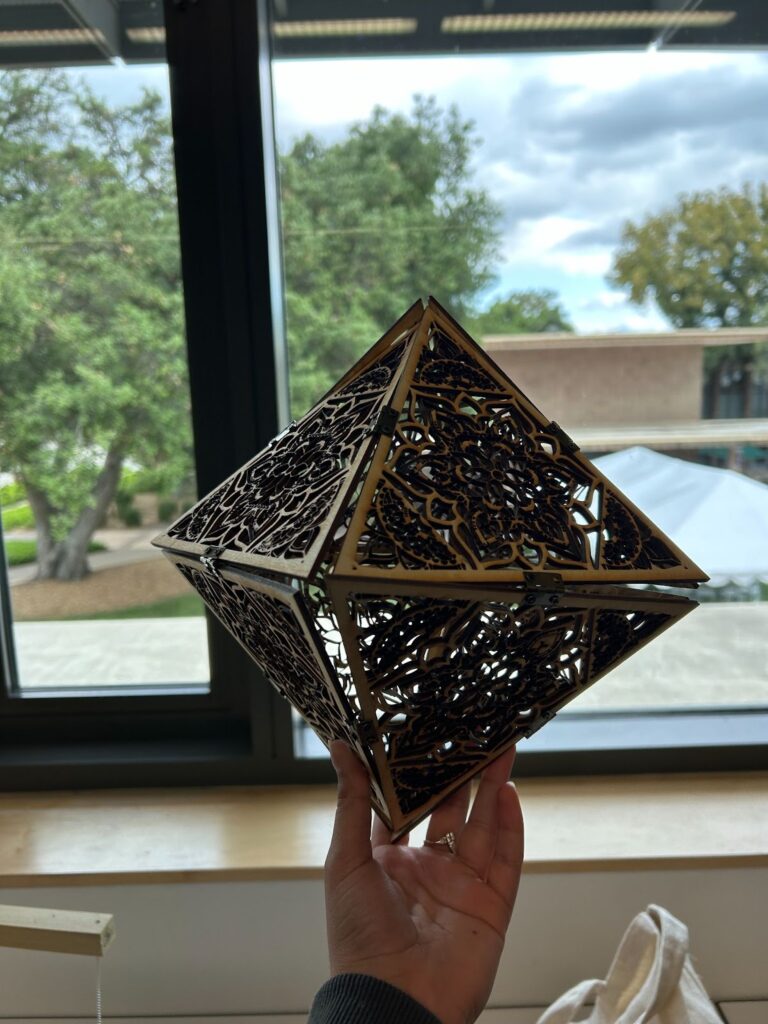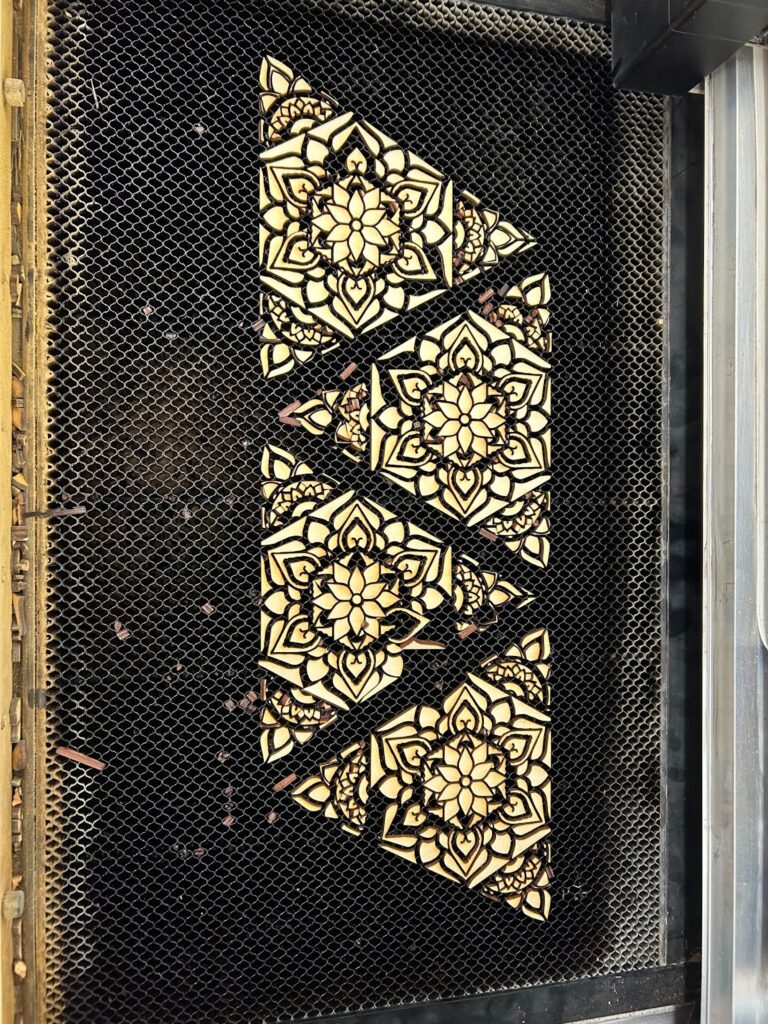Project Overview
Following my previous project about mandala art, I decided to explore the possibility of melding the concepts of three-dimensional structures with mandala art. This led to the inspiration of crafting a 3D octahedron, where each of its triangular faces serves as a mandala, each with unique symmetry groups and properties.
Goal: Create an Octahedron using Mandala Art
The main objective of this project is to integrate the traditional two-dimensional mandala art into a three-dimensional geometric framework, specifically an octahedron.
Explanation of Mathematical Concept
An octahedron is a type of polyhedron with eight faces, each face being an equilateral triangle. In this project, the octahedron has a unique artistic aspect added by me. What is interesting is that mandala art is all about symmetry and balance, and this is a core principle that is important in geometry as well. By using mandals, which inherently display properties of cyclic and dihedral symmetries, on the surfaces of an octahedron, I aim to illustrate how complex theoretical mathematics can be visualized in a tangible form.
An octahedron has six vertices and twelve edges. At each vertex, four edges meet which is indicative of its high degree of symmetry. It has 24 different symmetries including reflections and rotations, making it very interesting to explore in group theory. The symmetry group of an octahedron is the same as that of a cube, which is the octahedral group.
Procedure
- Design Phase
Initially, I started by sketching individual mandalas to fit the equilateral triangles of the octahedron. The mandalas were designed to have symmetrical properties similar to the singular mandala I explored in my previous project.
- Digital Modeling
Using “Amaziograph” on my iPad, I translate these sketches into digital models. The design was adjusted to account for the automatic reflection that the app would do.
- Laser Cutting
For the material I used plywood which is both study and easy to cut. I actually wanted to do 20 faces (Icosahedron) but unfortunately it would have taken way too many hours! It ended up taking a total of 4 hours to laser cut.
After each triangle was cut, I drew the position of each hinge and used the camera on the laser cutter to place the holes for the screws to connect the pieces.
- Assembly
The final phase was screwing the hinges together and folding the octahedron into its 3-D form. This was challenging because I did not want to break my pieces and the hinges were quite rigid without much movement ability.
Challenges and Learnings
One of the significant challenges was ensuring that the intricate details of the mandalas were not lost during the cutting and assembly process. I ended up simplifying my design so that details would not get lost in translation
Conclusion and Reflection
I am very excited about how this project worked out and I think it looks really good! I am also excited that I was able to apply some abstract algebra when creating this project. It would be cool to extend this project by considering other polyhedra in the future since the process would be easier now that I have done two iterations of this project!
Here are some photos of how it turned out!


Leave a Reply